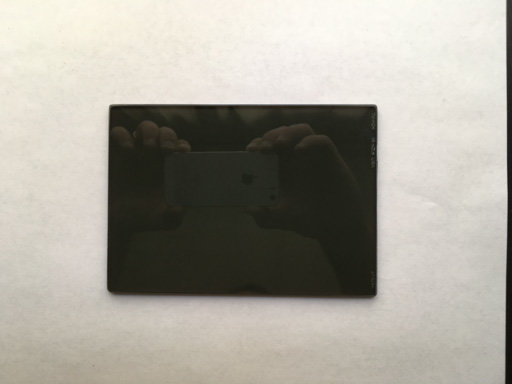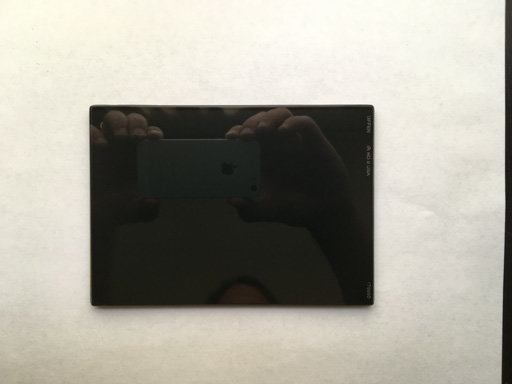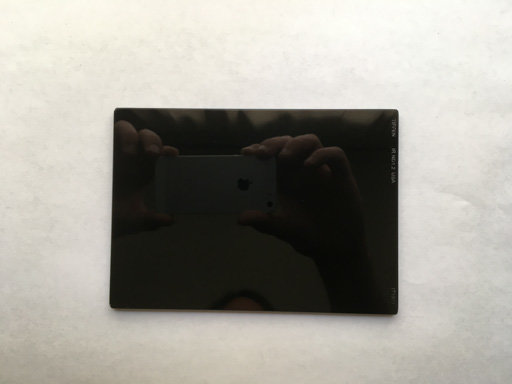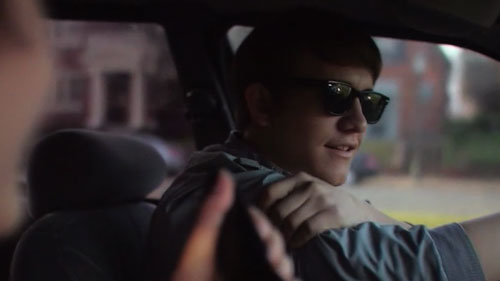-
Posts
31 -
Joined
-
Last visited
Everything posted by Colton Davie
-
I have for sale a set of 4x5.65" Tiffen IRNDs in excellent condition, no scratches, chips, marks, etc. Includes: 4x5.65" Tiffen IRND 0.3 4x5.65" Tiffen IRND 0.6 4x5.65" Tiffen IRND 0.9 4x5.65" Tiffen IRND 1.2 Each with original boxes, pouches, and mylar sleeves. Asking $1,100 for the set. Not interested in breaking up the set at this time. Available for inspection/pick up in Los Angeles until July 17, after which they will be in Portland, OR. I can also ship anywhere within the US. I will accept cash or cashier's check for in-person pick-up. Otherwise, I will accept PayPal. Please contact me here or at coltond719@yahoo.com.
-

KODAK 5219 (500T) - 9 Rolls - FOR SALE!
Colton Davie replied to Adam Cohen IMPOSTOR's topic in Cine Marketplace
Hi Adam, I tried sending an email, but got a delivery failed message. Are these still available? If so, how old is the film, and how has it been stored? Where is it located? Thank you! -
Hello, Shooting in San Francsico this weekend on an SR2 and having a problem with the batteries losing charge/not charging. Is there someone that rents compatible batteries in the San Francisco area? And would it be possible to get in touch with them on the weekend? Thanks, Colton
-
Back in the day, my first videos were made of handycam motocross footage edited to music. Since then, I've mainly been working on narrative stuff. Recently, I got to go back to my roots, but this time with an Epic, 16mm film, and hopefully a bit more skill. It was very exciting to be back shooting motocross, and while I love narratives and drama, I sure wouldn't mind shooting more extreme sports. I know things can always be better, so I'd love to hear what you think. Also, if you have any tips for finding work in the extreme/action sports world, I'm all ears! Thanks, Colton Davie
-
I recently shot a project on the Sony PMW-F3. Being unfamiliar with the camera, I decided to do some tests to figure out how the camera responded to light and color, how flexible the footage was in grading, and what picture profile settings would best suit the look I was trying to achieve. It was fascinating to see how different picture profiles affected the image, especially the way colors were handled, as well as the camera's ability to hold over and under-exposure. I hadn't been paying much attention to this camera as it seemed to get kind of lost somewhere in between DSLRs and the RED/Alexa. These tests, however, have drastically changed my view of the camera. While these tests are somewhat specific to the project I was shooting, I figured I might as well share the results and let you make of them what you will. The Details: For reasons outside of my control, the production made the choice to record onto the standard SxS cards as opposed to an external recorder. As this limited us to the 35mbps MPEG2 4:2:0 XDCAM codec, one of my concerns was that the grading required to make something like S-log watchable might be too much for the footage to handle. For this test, I created a lighting setup similar to what I planned for the biggest scene in the movie. I bounced a slightly dimmed 100W pepper off of a 4' square of bleached muslin from below and created a soft, wrapping backlight with a 420W pepper through a small chimera, diffused further with a 4' frame of 216. I put an accent on the back wall with a 250W light with a doubled up blue party gel to emulate a feature that existed in our filming location. A spot reading on the gray card gave me T2.8 at ISO800, the highlights on the face were around T4, and the blue highlight was a little over T5.6. I left the diffusion and bounce slightly in frame to see how the camera reacted to extreme highlights. I then, with the help of my lovely wife, made a series of exposures using the following settings (the camera was constantly set to 3200K, 180° shutter, 24fps and for the lens I used a 35mm Zeiss Superspeed MkII): *S-log with LUT turned off. 0db gain/ISO800. Exposed normally, as well as 1 and 2 stops over, and 1, 2, and 3 stops under. *S-log with the REC709 800% LUT baked in. 0db gain/ISO800. Exposed normally, as well as 1 and 2 stops over, and 1, 2, and 3 stops under. *S-log off, and using the Abelcine Range picture profile. 0db gain, which is approximately ISO400 on this camera when S-log is turned off. Exposed normally, as well as 1 stop over (the lens wasn't fast enough to go 2 stops over), and 1 and 2 stops under. *I was planning to light the film with an ISO800 rating in mind, so I tested the Abelcine Range picture profile again at 6db gain/ISO800 to see how much noise this introduced. Exposed normally, as well as 1 and 2 stops over, and 1 and 2 stops under. *I then chose a standard picture profile, set the matrix to Cinema, then, at 6db gain/ISO800, made normal exposures using the following gamma settings: Cine 1, Cine 2, Cine 3, and Cine 4. I then took all the footage through Apple Color to see how it responded to grading. My adjustments consisted mainly of tweaking the luma curve for contrast and bringing the offset exposures to a normal brightness, tweaking saturation, and slight color tweaks, mostly consisting of a slight increase of blue in the highlights and decrease of blue in the shadows. Certain picture profiles created some nasty clipping in the blue channel as a result of the background light, in these instances I used a secondary correction to tone down the saturation in that part of the image. I was surprised by how easy it it was to bring down the over-exposed footage. With the under-exposed footage, however, if it began to get unacceptably noisy, then I would leave it dark. The footage was rendered to ProRes 422 (HQ) from Color. You can see the footage at http://vimeo.com/36058107. You can also download a high quality .mov from that page by scrolling down and to the right. You can obviously come to your own conclusions about the footage, but I was very impressed by the camera. Surprisingly, the low bitrate codec with S-log held up to grading very well. I would love to see this footage recorded at 4:4:4 to a Gemini. Even at 4:2:0 on the SxS cards, the footage was totally usable from 2-stops under to 2-stops over. I appreciate the idea that, like with film, you could rate the sensor differently to get different looks out of the camera. For example, under-exposing a stop to get slightly flatter contrast, less saturation, and a little noise to add texture to the image. Or over-exposing and getting punchier colors and contrast and a smoother looking image. Based on these tests, I decided to shoot the project in S-log, with no LUT, and rated at ISO800. Because I was confident in the camera's latitude, I felt free to expose it much like I do film, relying on my meter, and not being afraid to let characters move in and out of hot spots or shadows. I fussed with the camera on-set less than any other digital camera I have worked with. We wrapped just a couple of days ago, and I look forward to seeing the footage through the color grade. I am very impressed with this camera. It out performs any DSLR without a doubt, as it should, and it handles skin tones very well for a digital camera, significantly better than the RED, in my opinion. The form factor is also pretty nice. I operated both on sticks and handheld with a Mantis rig and it felt quite comfortable. Although, the flip-out LCD was too close to my face on the Mantis, so I had to operate off an external monitor armed out next to the mattebox. It also could have used a little more weight on the back. A viewfinder along the side would be nice... I will definitely be giving this camera a fair consideration on future jobs. I haven't used the C300 yet, but I'm starting to wonder, what can the Canon do that an F3 with S-log and an external recorder can't?
-
Dom, thanks for the info. Very helpful. I've contacted the seller and should be hearing back on Monday. However, in the meantime, the mag has seemed to "dry out" a bit since I've had it inside with the air conditioner for the past few days. Maybe being in the back of a hot UPS truck exacerbated the problem a bit; the humid, 100° Alabama weather can be pretty intense! Under more bearable conditions, t seems like it may not be too terrible of a problem, but I'd rather be sure before shooting something really important.
-
The UPS man dropped off my SR2 today and I have been combing through everything. It all seems to be looking good except for one of the two mags. One of the mags is clean and dry as I would expect, but the other has a sticky/gummy feeling on the inside surfaces (of the walls particularly, the pressure plate, guide rollers, etc. seem to be fine). It is almost as if some residue is covering everything, or that the surfaces themselves have become soft. Is this particularly unusual? What do I need to do to fix it? I was told that the camera and mags were rental items before I bought them, and that they were serviced before shipping. Is it not that big of a deal? The film technically shouldn't touch any of these surfaces during normal use, but I'd definitely feel safer with the other mag... Any thoughts would be much appreciated!
-
Thanks for the information, guys. I'm still learning what is unique about the SR2 as I've only used the SR3. Visual Products was able to help me out with batteries and one of their chargers with Arri connectors. They were very pleasant to do business with. Thanks again.
-
I am looking for batteries and charger for an Arri SR2. I am looking primarily for onboard batteries (and perhaps the onboard power adapter), but may be interested in a block battery as well. If you have any that your are willing to sell, I'd love to talk. Or, if you can point me in the right direction, that would be much appreciated as well. And, just to be sure, am I right in assuming that the same batteries work for all three generations of the SR cameras? Thanks!
-

PL Mount Zooms for Super 16mm
Colton Davie replied to Colton Davie's topic in Lenses & Lens Accessories
Thanks for the advice everybody. I ended up purchasing a Canon 8-64mm. Looking forward to receiving it in the next week or so! -
I had a very similar situation come up a few of years ago. We didn't have any way to add light, so I simply put a double net or ND.6 over the windows in the shot, leaving the other windows clear. This kept the background from blowing out, while letting enough light in through the other windows—primarily the windshield—to get a decent exposure on the talent. It also helped that we shot in locations such as streets lined by buildings or trees, where there wasn't a lot of bright sky in the background. If the side of the buildings you see in the background are in shadow, that helps even more. Here's one of the shots from this set-up. It's been compressed from a still frame taken from a compressed .mp4, but at least you can get an idea of the effect. Hope that helps! Colton Davie
-
I am planning to buy a Super 16mm SR2 with PL mount. I expect that for most shoots I will be able to rent a set of primes as needed. However, I would like to at least have one lens of my own for personal projects, etc. A zoom seems like the reasonable way to go, but if I can find an inexpensive set of primes that would be just as well. Based on my research so far, the Canon 8-64mm sounds the most appealing. Obviously, I'm looking for something that covers the Super 16mm frame throughout its range and fits the PL mount (I am open to lenses adapted from bayonet mount as well). Decent minimum focus is also important. The 5ft of some lenses just seems too far. A T3 or faster is important. And of course, sharpness, as always, is nice, but I realize that I could be asking a lot for an inexpensive lens. Like I said, for more important projects, I expect to rent nicer lenses, but I don't want my personal lens to be so soft it's worthless. The Angenieux 15-150mm T3.1 is intriguing for the price, but is it just too soft? Less than $3000 would be ideal, but I'm willing to be flexible for something that will serve me well. Any suggestions or experiences with lenses in this category to share? And, if you have a lens for sale, feel free to convince me why I should buy it from you! Thanks Colton Davie
-

Demo Reel (35mm, 16mm, 8mm, DV)
Colton Davie replied to Colton Davie's topic in Please Critique My Work
Ha! Thank you for the comment. I figured the light saber shots might not go over so well... -
Nice, very clean. I really like the grading on the bus stuff. The textures (the frosted windows, furry hats, etc.) on that part are cool as well. I also like the movement in the lighting. The stuff with the guitarist at the campfire is nice, but I felt like the other people were underlit. Those shots lacked the cleanness of the earlier shots. Overall, good work.
-
I am working on putting together a new cinematography reel. Before I start handing them out, I would love to get some honest opinions from outside sources. What I have now I consider a rough cut, so feel free to tear into it and offer critiques concerning the editing, shots that should or shouldn't be there, etc. Pardon the compression, but here it is. Once I get closer to a final cut, I'll upload a higher res version. Comments highly appreciated. Thank you!
-
Thanks for the critiques. It´s very helpful to get an objective viewpoint on my work, your thoughts concerning how the different sections ranked against each other were particularly interesting. Thanks again,
-
Sounds like a label printed directly on the disc is the way to go. Thanks for the the advice and suggestions.
-
I know this is kind of a simple question, but it needs asking. I am curious as to how most of you go about labeling DVDs for demo reels and the like. I have always used a sharpie, but I have been wondering if that is a very professional way to go about it, especially considering my not-so-perfect handwriting. So, what do you do? Sharpie, printable discs, Lightscribe? And, what is generally expected? Thanks, Colton Davie
-
I recently completed a fine cut of my first demo reel, a task that was a bit more challenging than I had thought. As this is my first time cutting a reel, I expect that there are ways it can be improved. I would appreciate any constructive criticism. You can see the reel here: Quicktime (16.5 MB): http://openlightstudios.com/portfolio/ColtonDavieDPReel.mov Windows Media (10.9 MB): http://openlightstudios.com/portfolio/ColtonDavieDPReel.wmv Thank you, Colton Davie
-
Thanks for the comments everyone, they are quite helpful. David, the thought actually flashed across my mind while I was thinking of how to light the scene of making the light look more like it was coming from the lamp. Unfortunately, I'm kind of at a point where I think of everything in terms of 3-point lighting, thus I quickly replaced that thought with a more standard set-up. Thanks for pointing that out though. It would be good for me to learn how to successfully deviate from the standard set-up. Johnathan, the film was actually shot in nearly reverse sequence. I think what happened was that I had so much more time to do the first set-up that I could get it just how I wanted, while the later shots were more rushed. As for shooting 35mm as opposed to something smaller, my film professor owned a Konvas which he let me use for free. Plus I only shot about 1200' using all short-ends. It was a great experience. Finally, no; there is not dialogue sound. Bill, I used 3 lenses, a 35mm, 50mm, and 75mm. I had a few more to choose from, but I am a bit new to using primes, so I stuck with what I was comfortable with. Camera: Konvas 1M Lenses: Lomo 35mm, 50mm, 75mm (can't remember their speeds) Film stock: Vision 2 500T short ends from Film Emporium Processed by Cinefilm in Atlanta Transfered to MiniDV at MPL Media in Nashville Obviously I have a lot more to learn. Thankfully, everyone's comments have helped illumine the areas that need the most help. Thanks,
-
I was recently blessed with the opportunity to shoot a short film on 35mm. This was my first time really working with film of any gauge, so it was very much a learning experience. Now that the short is finished, I would like to know what you think about it, the good and the bad, so that I might take that advice to hopefully improve the quality of my next project. You can see it here: Windows Media (25 MB) http://openlightstudios.com/portfolio/ANewPage.wmv Quicktime (23.4 MB) http://openlightstudios.com/portfolio/ANewPage.mov Thanks.
-
Very nice. The lighting has a very natural look while remaining aesthetically pleasing. The compositions are also nice. I like the symmetrical compositions of stills 2 and 3. Good job.
-
I recently was given the opportunity to shoot a short on 35mm. While I have shot a fair amount of video, this was my first venture into film. I was a bit nervous going into telecine at MPL Film & Video, expecting the worst. However, as it turned out, I was very pleased with the results. Here a some stills from the film, which was shot on Kodak 5218 with a Konvas 1M.
-
Scratch that about the light meter. There was some corrosion on the battery contacts. I cleaned them off and now both automatic and manual adjustments seem to be working properly.
-
I recently picked up a Nizo S55 off of eBay. Upon recieving it, I put in some batteries and pulled the trigger to see if it ran. It did, and as far as I know it sounded like it was running properly. However, I wasn't seeing any pointer or anything on the f-stop scale in the viewfinder, even when I turned the knob to manual. Today I recieved a roll of Tri-X film to test the camera. I also picked up a couple batteries for the light meter. Even with the catridge loaded and light meter batteries installed, I wasn't seeing any sort of indicator on the f-stop scale. I then rolled off several seconds of film. It sounded as if it was being transported by the drive, however, it did not sound like it was rolling very smoothly/regularly. Once, the film seemed to stop, and the camera started making this continuous buzzing noise, even after I released the trigger. It wouldn't stop until I folded back the handle, thus disconnecting the batteries. This is my first, supposedly working, super 8 camera, so I don't know much about them. But, it seems that I am having a problem with the exposure indicator as well as the film drive. Does anyone know a way to fix this problem? Thanks,








